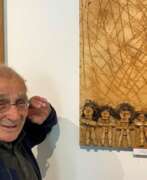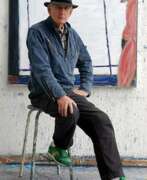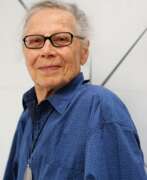Europe 21st century
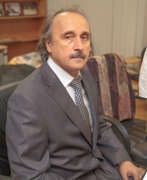

Sultan Shamsutdinovich Abaev (Russian: Султан Шамсутдинович Абаев), a Chechen and Russian artist born on November 1, 1954, in Khaidarkan, Soviet Union, is celebrated for his distinctive contributions to landscape art. A member of the Artists Unions of Saint Petersburg and the Chechen Republic, Abaev's work exemplifies his profound connection to his cultural roots and the rich landscapes that inspire him.
Educated at the prestigious Repin Institute of Painting, Sculpture, and Architecture in Saint Petersburg, Abaev has been honored multiple times for his artistic achievements, including receiving the title of Honored Artist of the Russian Federation. His works have been internationally recognized, finding places in private collections across countries such as Germany, the United States, and Japan.
Abaev's career also includes time spent abroad in Sri Lanka and South Korea from 1991 to 1993, where he expanded his artistic horizons and produced a series of paintings influenced by these experiences. Today, his works are sought after by collectors, especially those interested in landscapes and cultural narratives embedded in art.
Stay updated on exhibitions and sales related to Sultan Shamsutdinovich Abaev's enchanting landscapes by signing up for our exclusive alerts. These updates are essential for collectors and art connoisseurs interested in owning a piece of Chechen and Russian art history.
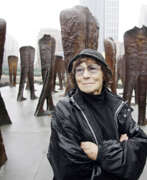

Magdalena Abakanowicz was a distinguished Polish artist, celebrated for her innovative use of textiles as a sculptural medium. Born on June 20, 1930, in Falenty, Poland, and passing away on April 20, 2017, in Warsaw, she carved out a significant place in the art world with her unique artistic expressions that often explored themes of crowd behavior, the trauma of war, and the individuality of the human condition.
Abakanowicz's education at the Academy of Fine Arts in Warsaw was a period of both artistic and personal growth, shaping her future works. During the 1960s, she began creating the "Abakans," large-scale textile sculptures that challenged conventional forms and expressed dynamic movement and vivid emotion. Her works often featured organic, tactile materials like burlap, resin, and wood, which added a profound depth and rawness to her sculptures.
Her sculptures are well-represented in major public installations and collections worldwide, including the National Museum in Wrocław, Poland, Grant Park in Chicago, and the National Gallery of Art Sculpture Garden in Washington, D.C. These pieces are not just art forms but are experiences, inviting viewers to explore deeper psychological and existential themes.
For those captivated by the profound impact and the stirring beauty of Magdalena Abakanowicz's work, subscribing for updates can provide regular insights and information on exhibitions and sales of her works at auctions. This is an excellent way to stay connected with the legacy of an artist who continuously redefined the boundaries of sculpture and installation art.
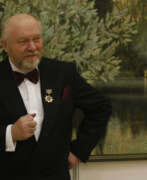

Mikhail Georgievich Abakumov (Russian: Михаил Георгиевич Абакумов) was a Russian artist, celebrated for his diverse artistic contributions and his deep connection to his homeland, Kolomna. Born in 1948, Abakumov became a prominent figure in the Russian art scene, recognized as a People's Artist of Russia and a dedicated teacher and community leader in Kolomna.
Abakumov's artistic oeuvre includes industrial and genre canvases, evocative landscapes, and intimate portraits, which are held in high esteem across Russia and in private collections worldwide. Notable works like "Metallurg" (1974) and "Spring Morning" (1996) showcase his ability to capture the essence of Russian life and landscapes. His art has been exhibited extensively within Russia and internationally, including over thirty solo exhibitions since 1979, contributing significantly to the cultural tapestry of the Soviet and post-Soviet periods.
His works are part of prestigious collections, including the State Tretyakov Gallery, and have been featured in various museums across cities like Moscow, St. Petersburg, and internationally.
For those interested in exploring Russian art and the legacy of Mikhail Georgievich Abakumov, signing up for updates on exhibitions and sales of his artworks can provide valuable insights and opportunities. Join our community to stay informed about events and auctions featuring Abakumov's remarkable works.
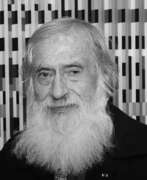

Yaacov Agam, an Israeli kinetic and optical artist born on May 11, 1928, is celebrated for revolutionizing the visual arts with his dynamic and interactive creations. Agam's pioneering work extends beyond traditional static art forms, inviting viewers into a transformative experience that changes with perspective and movement. His art, deeply rooted in his Jewish heritage and mysticism, eschews representational imagery for abstract, geometric forms and vibrant colors, engaging the observer's perception to complete the visual experience.
Notably, Agam's contributions to kinetic art have not only garnered him international acclaim but also led to his works commanding the highest prices among Israeli artists at auction. His innovative "Agamographs" use lenticular printing to create illusions of depth and motion, highlighting his fascination with the interplay between art, viewer, and the temporal dimension. Agam's significant exhibitions include retrospectives at the Musée National d'Art Moderne in Paris and the Guggenheim Museum in New York. His achievements are further recognized through multiple awards and the establishment of the Yaacov Agam Museum of Art in his hometown of Rishon LeZion, Israel, dedicated to his vision of art in motion.
For collectors and art and antiques experts, Agam's work represents a profound exploration of perception, time, and spirituality, offering a unique and engaging experience. His art invites us to see beyond the visible, reminding us of the ever-changing nature of reality and our active role in its perception. To stay updated on new product sales and auction events related to Yaacov Agam, sign up for updates and immerse yourself in the dynamic world of one of the most influential modern artists.
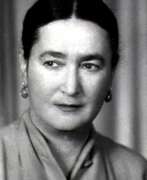

Mariam Arshaki Aslamazyan (Russian: Мариам Аршаковна Асламазян) was a renowned Soviet-Armenian painter, often hailed as the "Armenian Frida Kahlo" due to her vibrant and expressive works that prominently featured elements of Armenian culture. Born on October 20, 1907, in Alexandropol (now Gyumri), Armenia, Aslamazyan was celebrated for her unique style which blended traditional Armenian themes with modernist influences.
Throughout her career, Aslamazyan's artwork received significant accolades, including the prestigious titles of People's Artist of the Armenian SSR in 1965 and People's Artist of the Soviet Union in 1990. Her paintings are characterized by their vivid colors and dynamic compositions, often focusing on still lives, narrative scenes, and portraits.
Aslamazyan's works are preserved and displayed in several major collections, notably at the Gallery of Mariam and Eranuhi Aslamazyan Sisters in her hometown, which showcases an extensive array of her oil paintings and ceramic works. Her artistic legacy continues to be celebrated in exhibitions and holds a significant place in Armenian cultural heritage.
For those interested in exploring more about Mariam Arshaki Aslamazyan's life and art, or in acquiring works associated with her, consider subscribing for updates on new product sales and auction events related to her work. This subscription will keep you informed about opportunities to engage with Aslamazyan's art legacy.


Mario Botta, a Swiss architect born in 1943, is celebrated for his profound contributions to contemporary architecture. His work is characterized by a robust geometric style and profound respect for historical context, often integrating modern elements with traditional designs. Botta's designs are known for their distinct use of brick and strong shapes, such as circles, squares, and triangles, which make his buildings instantly recognizable.
Among his notable projects are the San Francisco Museum of Modern Art and the Cathedral of the Resurrection in Evry, France. These structures exemplify his approach to blending new construction technologies with classical forms. The museum, in particular, showcases his ability to manipulate space and light, creating dynamic environments for displaying art. His buildings are not just structures but are often considered sculptural works that enhance their surroundings.
Mario Botta's influence extends beyond architecture into design and education, where he has mentored generations of architects. His work is displayed in numerous exhibitions worldwide and serves as a testament to the enduring power of integrating contemporary design with traditional elements. Collectors and experts in architecture appreciate Botta’s unique ability to transform ordinary spaces into extraordinary places.
For those interested in the innovative work of Mario Botta, consider signing up for updates on new project unveilings and auction events related to his creations. This subscription ensures you stay informed about the latest developments and opportunities to engage with Botta's influential designs.
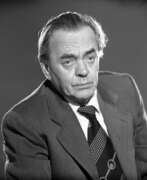

Boris Fedorovich Domashnikov (Russian: Борис Фёдорович Домашников) was a prominent Russian painter, celebrated for his deep emotional engagement with the landscapes and architecture of Russia. Born in 1924 in the village of Krivousova, Ivanovo region, Domashnikov was a student at the Ufa Theater and Art School, where he was under the tutelage of P.M. Lebedev and A.E. Tyulkin. He distinguished himself in the genre of landscape painting, frequently exploring themes of work and nature, particularly the serene and rugged beauty of the Urals and the historic architectural majesty of places like Novgorod and Pskov.
His early work, "Winter on the Edge," marked the beginning of his exploration into the provincial landscapes of the mountains, showcasing his ability to capture the silent majesty of nature. Throughout the 1960s, Domashnikov's interest expanded into the realm of ancient Russian architecture, resulting in a notable series that featured the Novgorod and Pskov regions. The late 1970s saw him focusing on Red Square, producing works that not only depicted its architectural grandeur but also conveyed the historical and emotional depth of this iconic locale.
Domashnikov's paintings are celebrated for their vibrant color and harmonious compositions, embodying a sublime and emotional perspective that resonates with viewers. His artworks are held in prestigious collections, including the State Tretyakov Gallery and the Academy of Arts, affirming his significance in Russian art history. Throughout his career, he remained an active participant in exhibitions and was honored with numerous awards, including the title of People's Artist of the USSR in 1982, reflecting his substantial contribution to Russian cultural heritage.
For art collectors and experts, the work of Boris Fedorovich Domashnikov offers a profound insight into the soul of Russian landscapes and architecture, rendered with a deep affection and nuanced understanding of his subjects. To stay updated on new discoveries and auction events related to Domashnikov's art, signing up for updates is highly recommended, ensuring enthusiasts do not miss out on opportunities to engage with the legacy of this remarkable artist.
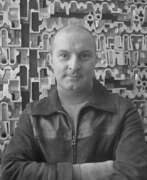

Armand Pierre Fernandez, widely known by his mononym Arman, was a French-born American artist celebrated for his innovative contributions to the Nouveau Réalisme movement and his radical use of everyday objects in art. Born in Nice, France, on November 17, 1928, Arman's early exposure to art came from his father, an antiques dealer and amateur artist, which deeply influenced his later artistic endeavors.
Arman moved beyond traditional painting techniques early in his career, instead creating his signature "Accumulations" and "Poubelles" (trash) sculptures. These works involved assembling and compacting everyday items like watches, clocks, and even automobiles, embedding these objects in layers of concrete or encasing them in Plexiglas. One of his most notable large-scale works is "Long Term Parking," a 60-foot high sculpture made of concrete-encased cars, situated in Jouy-en-Josas, France.
His work is an essential bridge between European and American trends in Pop art and has been widely exhibited in major institutions like the Metropolitan Museum of Art in New York, the Tate Gallery in London, and the Centre Pompidou in Paris. Arman's innovative techniques and philosophical approach to materials challenged conventional categorizations of art and inspired future generations of artists.
For collectors and enthusiasts interested in staying updated on exhibitions and sales related to Arman's work, signing up for updates can provide essential insights and opportunities related to this influential artist. Join our community to ensure you don't miss out on new discoveries and auction events associated with Arman's legacy.
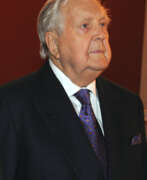

Ilya Sergeyevich Glazunov (Russian: Илья́ Серге́евич Глазуно́в) was a distinguished Soviet and Russian artist, born on June 10, 1930, in Leningrad, and passing away on July 9, 2017, in Moscow. Glazunov was not just a painter; he was a visionary and an educator who founded the Russian Academy of Painting, Sculpture, and Architecture in Moscow, where he also served as rector until his death. Glazunov's artistry was deeply rooted in historical and religious themes, as seen in masterpieces like Russia the Eternal, The 20th Century Mystery, and The Ruining of the Temple on Easter Night, along with his celebrated illustrations for Fyodor Dostoyevsky's works.
Glazunov's contribution to Russian art and culture was immense. He was a full cavalier of the Order "For Merit to the Fatherland," among other honors, acknowledging his significant role in the national art scene and education. Notably, during the 1970s, Glazunov played a key role in saving parts of Moscow's historic center from destruction due to proposed restoration plans, showcasing his commitment not only to the arts but also to preserving Russia's cultural heritage.
Collectors and experts in art and antiques admire Glazunov for his unique blend of artistic brilliance and dedication to cultural preservation. His works, which are held in high esteem across the globe, are a testament to his skill, vision, and unwavering love for his homeland. For those intrigued by Glazunov's legacy and wishing to explore his works further, subscribing for updates on new sales and auction events related to Ilya Sergeyevich Glazunov is highly recommended. This subscription is an invaluable resource for staying informed about opportunities to own a piece of Russian art history.
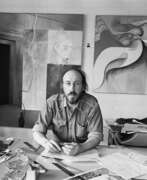

Richard William Hamilton was a pivotal figure in the evolution of modern art, seamlessly blending traditional mediums with emerging cultural commentary. Born in London in 1922, Hamilton emerged as a leading voice in the pop art movement, a genre that sought to bridge the gap between high art and popular culture. His work, characterized by its innovative use of materials and its critical eye on consumer society, positioned him as a critical link between art's past and its rapidly evolving future.
Hamilton's influence is perhaps best encapsulated in his iconic collage, "Just what is it that makes today's homes so different, so appealing?" Created for the This Is Tomorrow exhibition in 1956, this piece is widely regarded as one of the first works of pop art, predating the more widely recognized contributions of American artists like Andy Warhol and Roy Lichtenstein. By integrating images from magazines, advertisements, and other mass media, Hamilton crafted a visually striking critique of contemporary consumerism and its pervasive impact on the domestic sphere.
Beyond his contributions to pop art, Hamilton's legacy is also preserved in his role as an educator and theorist. His writings and teachings have influenced generations of artists, encouraging them to explore the intersections of art, technology, and society. His works are held in high esteem and are featured in prestigious collections worldwide, including the Tate Gallery in London and the Museum of Modern Art in New York.
For collectors and experts in art and antiques, Hamilton's oeuvre offers a fascinating window into the mid-20th century's cultural shifts. His ability to capture the zeitgeist of his time, while also pushing the boundaries of what art could be, makes his work both historically significant and continually relevant.
To stay informed about new product sales and auction events related to Richard William Hamilton, we invite you to sign up for updates. This subscription ensures you remain at the forefront of the art and antiques world, with a focus on one of its most influential figures.
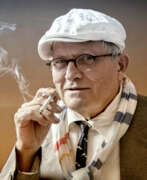

David Hockney, a British artist, has been a prominent figure in the art world for over six decades, renowned for his contributions to painting, drawing, printmaking, photography, and video art. His exploration of these mediums has made significant impacts on the Pop Art movement and beyond, making him one of the most influential artists of the 20th and 21st centuries. Hockney's work is celebrated for its vibrant color palette, emotional depth, and innovative use of technology in art.
One of Hockney's most distinctive features is his ability to blend traditional techniques with modern technology, notably in his iPad drawings and photographic collages. This fusion not only showcases his skillful adaptation to contemporary mediums but also highlights his ongoing quest to explore the nature of seeing and representation in art. Hockney's landscapes and portraits, characterized by their bright colors and meticulous detail, invite viewers to see the world through his unique perspective.
Significant works by Hockney, such as "A Bigger Splash" and "Portrait of an Artist (Pool with Two Figures)," are housed in major museums and galleries worldwide, attesting to his global influence and appeal. These pieces, among others, demonstrate Hockney's mastery over space, light, and narrative, securing his position as a pivotal figure in modern and contemporary art.
For collectors and experts in art and antiques, Hockney's oeuvre presents a fascinating study in the evolution of visual arts. His work not only offers insight into the artist's personal vision but also reflects broader cultural and technological shifts in society. As interest in Hockney's art continues to grow, keeping abreast of new sales and auction events becomes increasingly valuable.
To stay informed about the latest David Hockney sales and auction events, sign up for our updates. This subscription ensures that you receive timely notifications about new product sales and auction events related to David Hockney, offering unique opportunities for collectors and enthusiasts alike.
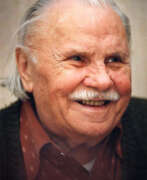

Vladimir Alexandrovich Igoshev (Russian: Владимир Александрович Игошев) was a renowned Russian painter, celebrated for his contributions to realism and his vivid portrayals of the northern regions of Russia. Born in 1921 in Bashkiria, Igoshev embarked on his artistic journey at the Theatrical Arts College in Ufa, followed by his graduation from the Moscow State Art Institute named after V.I. Surikov in 1950.
Igoshev's work is distinguished by its focus on the lives and environments of the nomadic reindeer herding cultures in Siberia, often encapsulating the stark, raw beauty of the Russian North. His series on this theme stands out as a significant part of his legacy. His artistic merit earned him the titles of People's Artist of the RSFSR in 1965 and People's Artist of the USSR in 1991. His achievements were further recognized with the State Prize of the RSFSR named after I.E. Repin in 1982.
His artworks are featured in prominent collections, including the State Tretyakov Gallery, the Russian Museum, and various regional museums. Additionally, a personal museum dedicated to his works was established in Khanty-Mansiysk in 2001, underscoring his impact and continued relevance in the art world.
For collectors and enthusiasts interested in exploring the depth of Russian realism and Igoshev's unique interpretations of cultural landscapes, staying updated on exhibitions and auction events can provide valuable insights into his artistic contributions. To receive updates related to Vladimir Alexandrovich Igoshev, consider signing up for notifications about new product sales and auction events.
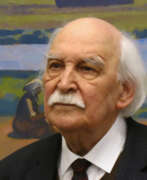

Victor Ivanovich Ivanov (Russian: Виктор Иванович Иванов) was a distinguished Russian painter, recognized for his significant contributions to the "severe style" of painting, a movement that emerged post-World War II. Born on August 2, 1924, in Moscow, Ivanov was an ardent student of art from a young age, training at notable institutions such as the Moscow secondary art school V. I. Surikov and the Moscow Government Art Institute V. I. Surikov.
Ivanov's works often revolve around the themes of rural life and the connection between humans and nature, depicting the life of peasants and their interaction with their environment. His painting "Women Harvesting" is an exemplary work that showcases his style and thematic focus. This piece, which is part of the Tretyakov Gallery's collection, epitomizes Ivanov's ability to blend colors and forms to capture the essence of peasant life, with a particular emphasis on the harmony and solemnity of rural labor.
Throughout his career, Ivanov's art was celebrated not only in the Soviet Union but also internationally, with exhibitions across Russia, Ukraine, and even in Cuba. His artistic philosophy was deeply rooted in realism, through which he believed one could express the spiritual and moral values of the common people. Ivanov's contributions to art were recognized with numerous awards, including the title of People's Artist of the USSR and membership in the Russian Academy of Arts.
For collectors and enthusiasts interested in the profound and evocative works of Victor Ivanovich Ivanov, staying informed about upcoming sales, exhibitions, and auction events is essential. Subscribe for updates exclusively related to Ivanov's works, ensuring you never miss an opportunity to engage with the legacy of this influential artist.
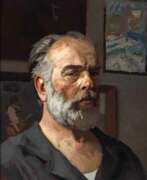

Geliy Mikhailovich Korzhev (Russian: Гелий Михайлович Коржев), a Soviet and Russian painter born on July 7, 1925, is remembered for his dedication to the Socialist Realism style, and his artworks echo the significant historical events of 20th-century Russia. His upbringing in a family deeply embedded in the arts, with a father who was a pioneer in Soviet landscape architecture and a mother who taught literature for four decades, undoubtedly shaped his artistic journey. Korzhev's formal art education began at the Moscow State Art School, under renowned tutors such as Vasily Pochitalov and Sergey Gerasimov, followed by the Moscow State Art Institute.
Korzhev's career was marked by his unwavering commitment to Communist ideals, even refusing a state award in the late 1990s from the Russian Federation, to stay true to his beliefs formed under the Soviet Union. This principled stance, alongside his detailed diaries and reflections, offers a deep insight into the man behind the canvas. His masterpieces, such as "Clouds of 1945" and "Conversation," not only demonstrate his skill but also his capacity to encapsulate complex historical and philosophical themes within his art.
The legacy of Korzhev's work is divided between prestigious Russian institutions and private collections worldwide, making his contributions to art a subject of both national pride and global appreciation. As collectors and experts in art and antiques, understanding Korzhev's influence requires recognizing both his artistic prowess and his deep-seated ideological beliefs that informed his work throughout his life.
For those intrigued by the intersection of art, history, and ideology, Korzhev's oeuvre offers a compelling study. Sign up for updates to stay informed about new product sales and auction events related to Geliy Mikhailovich Korzhev's remarkable art.
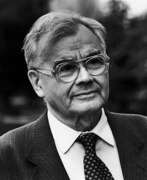

Engels Vasilyevich Kozlov (Russian: Э́нгельс Васи́льевич Козло́в), a Soviet Russian artist, was born on March 24, 1926, in Troitsko-Pechorsk, Komi Republic. Known for his contributions to the Leningrad school of painting, Kozlov specialized in genre and portrait painting, reflecting the social and cultural life of his era. His artistic journey included studies at the Yaroslavl Art College and the Tavricheskaya Art School, culminating in a significant tenure at the Leningrad Institute of Painting, Sculpture, and Architecture named after Ilya Repin.
Kozlov's works are celebrated for their vivid representation of Soviet life and have been featured in numerous exhibitions, both during his lifetime and posthumously. His legacy is preserved in various Russian museums and continues to be a point of interest at art auctions, where his pieces garner appreciation from collectors worldwide.
For those interested in exploring Engels Kozlov's unique artistic style or considering acquiring his works, subscribing to updates on new auction events and sales related to Kozlov could be highly beneficial. Stay informed about upcoming opportunities to appreciate and perhaps own a piece of this distinguished artist's legacy. Sign up here to receive these updates directly to your inbox.
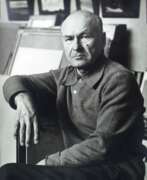

Yuri Petrovich Kugach (Russian: Юрий Петрович Кугач) was a prominent Russian artist, celebrated for his significant contributions to the realm of Soviet and Russian fine arts. His mastery in painting, especially within the genres of landscape and thematic works, marked him as a leading figure in the Russian realistic school of painting. Born in 1917, Kugach's artistic journey was distinguished by his dedication to portraying the natural and social landscapes of his homeland, earning him numerous prestigious titles and awards, including the People’s Artist of the USSR and the State Prize of the RSFSR named after I.E. Repin.
Kugach's works are known for their depth, expressiveness, and fidelity to the traditions of Russian realism. His celebrated pieces such as “On Saturday” and “Before the Dances” not only won him the State Prize of the RSFSR but also solidified his position as a steward of Russian artistic heritage. His art, deeply interwoven with the cultural and historical fabric of Russia, continues to attract attention and admiration, reflecting his lifelong commitment to exploring and depicting the essence of Russian life and nature.
As a key figure in Soviet and post-Soviet art, Yuri Kugach's legacy extends beyond his individual creations to include a dynasty of artists he inspired within his own family, fostering a lineage deeply rooted in the realistic portrayal of Russian subjects. His contributions to Russian art are celebrated through exhibitions and in collections both nationally and internationally, underlining the enduring appeal and significance of his work.
For collectors and experts in art and antiques, Kugach's oeuvre offers a rich tapestry of Soviet and Russian life through the lens of realism. His ability to capture the spirit of his subjects with authenticity and emotional depth makes his works highly sought after in the art world. To stay updated on new product sales and auction events related to Yuri Petrovich Kugach, sign up for updates and immerse yourself in the legacy of one of Russia's most revered artists.
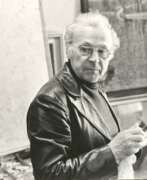

Andrey Ilyich Kurnakov (Russian: Андре́й Ильи́ч Курнаков) was a prominent Soviet and Russian artist, renowned for his contributions as a painter, graphic artist, and teacher. Born on October 5, 1916, in Oryol, Russian Empire, Kurnakov is celebrated for founding the Oryol art school, reflecting his deep connections to his homeland in the Oryol region of Russia. Throughout his illustrious career, he produced an extensive gallery of portraits, capturing both famous personalities and ordinary people with equal finesse. Kurnakov's artistic prowess was not limited to portraiture; he also excelled in creating epic battle scenes and decorating memorial complexes, showcasing his versatility and commitment to commemorating historical events.
His landscapes and genre portraits are particularly noted for their adherence to the traditions of Russian painting, blending realism and socialist realism to portray the vibrant and dynamic essence of Soviet life. Kurnakov's works are a testament to his skillful depiction of the human condition, the natural beauty of the Russian landscape, and the spirit of its people. His contributions to Russian art were recognized with numerous honors, including the prestigious titles of People's Artist of the USSR and People's Artist of the RSFSR, highlighting his significant impact on the art world.
Kurnakov's legacy continues to inspire, with his works held in high esteem and featured in various collections, including the State Tretyakov Gallery and the Oryol Regional Museum of Art. His dedication to art education, particularly through his teaching at the Oryol Pedagogical Institute, has left an indelible mark on generations of artists, perpetuating his influence within the Russian art community.
For collectors and experts in art and antiques, Kurnakov's oeuvre offers a unique glimpse into the heart of Soviet and Russian artistic expression, embodying the cultural, historical, and aesthetic values of his time. His works not only captivate with their technical excellence and emotional depth but also serve as a window into the evolving landscape of 20th-century Russian art.
If you're intrigued by the rich tapestry of Russian art history and the significant contributions of artists like Andrey Ilyich Kurnakov, consider signing up for updates on new product sales and auction events related to his work. Stay informed and enrich your collection with the profound and enduring legacy of one of Russia's most celebrated artists.
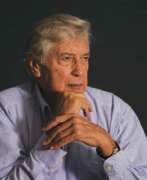

Julio Le Parc, an Argentine artist born in 1928, is celebrated for his significant contributions to modern op art and kinetic art. Educated at the School of Fine Arts in Argentina, Le Parc is a founding member of the influential Groupe de Recherche d’Art Visuel (GRAV) and has received numerous accolades for his work, cementing his status as a key figure in Argentine modern art.
Le Parc's art is renowned for its interactive nature, inviting viewers to experience his works through light, movement, and perception, rather than through narrative or representational content. His piece "Light in Movement" (1962), for example, uses painted drywall, mirrors, stainless steel, nylon thread, and spotlights to create an immersive environment of reflected and refracted light, exemplifying his focus on the sensory experience. Other notable works include "Celule Avec Luminere un Vibration" (1968), which employs light projections to create rhythmic patterns that immerse the viewer in a sensorial experience.
Le Parc's explorations extend to various series such as the "Alchemy" and "Modulation" series, where he experiments with elements like water and light to investigate movement and perception. "Alchemy 175" and "Alchemy 216," from 1991 and 1992 respectively, reflect his fascination with the transformative properties of water and light, while "Modulation 1160" (2004) is recognized for its illusion of motion, showcasing Le Parc's continuous innovation.
Julio Le Parc's works have been exhibited globally, including at prestigious venues like the Perez Art Museum Miami and the Serpentine Sackler Gallery, among others, highlighting his international acclaim and influence.
For those intrigued by the immersive and interactive qualities of Julio Le Parc's art, subscribing for updates on new product sales and auction events related to his works can offer exclusive insights and opportunities to engage with the artist's pioneering contributions to kinetic and op art.
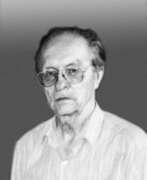

Oleg Leonidovich Lomakin (Russian: Оле́г Леони́дович Лома́кин) was a distinguished Russian artist, particularly known for his contributions to the Soviet Realist style and his association with the Leningrad School of Painting. Born in Krasny Kholm in 1924, Lomakin's early life was marked by hardship, including the death of his father and relocation to Leningrad, where he pursued his artistic education. He studied at the Leningrad Secondary Art School before being evacuated during World War II, and later at the Repin Institute of Arts under notable artists like Boris Ioganson.
Lomakin's art is celebrated for its dynamic brushstrokes and profound understanding of light and color, which he masterfully employed in portraits, historical paintings, and landscapes. His work captures the essence of Soviet life and the human condition, making him a key figure in Russian art history. His artworks are held in high esteem and are part of collections in major museums such as the State Russian Museum and the Tretyakov Gallery.
For those interested in exploring Oleg Lomakin's art further or acquiring pieces, visiting exhibitions or following auctions where his works are featured can be rewarding. To stay updated on new insights, sales, and exhibitions related to Oleg Lomakin, you might consider subscribing for updates. This ensures you are informed about any auction events and the availability of new works by Lomakin.
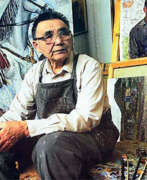

Akhmat Fatkullovich Lutfullin (Russian: Ахмат Фаткуллович Лутфуллин) was a prominent Bashkir, Soviet, and Russian artist-painter, born on February 4, 1928, in the Abzelilovsky region of the USSR. His work is highly regarded for its deep portrayal of the Bashkir people's life and culture, marking him as a master of Bashkir neo-realism. His artistic journey began in his school years and was further developed through formal education at prestigious institutions such as the Leningrad School of Architecture and Art and the Vilnius Institute of Artists.
Lutfullin's portfolio is rich with portraits and thematic compositions that vividly capture the essence of his subjects, often reflecting the national character and spirit of the Bashkir people. His works like "Portrait of Mother" (1956), "Self Portrait" (1957), and "Farewell to the Fatherland. Salavat" (1990) are celebrated for their emotional depth and cultural significance.
Akhmat Lutfullin's contributions to art were recognized with several honors, including the title of People's Artist of the USSR. His works are held in significant esteem, displayed in major museums such as the State Russian Museum and the Art Museum of Mikhail Nesterov in Ufa, and are a part of numerous private collections.
For collectors and experts in art and antiques interested in Soviet and Russian art, exploring Lutfullin’s work offers a profound insight into the rich cultural tapestry of the Bashkir people through the lens of one of their most esteemed artists. To stay updated on exhibitions and sales featuring Akhmat Lutfullin’s work, consider signing up for relevant alerts.
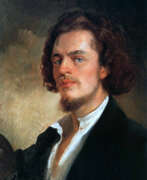

Konstantin Yegorovich Makovsky (Russian: Константин Егорович Маковский) was a renowned Russian painter, celebrated for his romantic and historical paintings that often portrayed an idealized view of Russian life in previous centuries. Born in Moscow in 1839, Makovsky became a pivotal figure in Russian art, distinguishing himself early on at the Moscow School of Painting, Sculpture and Architecture and later at the Imperial Academy of Arts in Saint Petersburg.
Makovsky was a core member of the "Peredvizhniki" or Wanderers, a group advocating for realism and social critique through art. His commitment to depicting the everyday life of old Russia won him accolades, including the Large Gold Medal at the World's Fair in Paris in 1889. Some of his notable works include "The Russian Bride's Attire" and "The Boyar Wedding Feast," which reflect his mastery in capturing the lavish and picturesque aspects of Russian history and culture.
Tragically, Makovsky's life ended in a road accident in Saint Petersburg in 1915, but his legacy lives on through his profound impact on Russian art and culture. His works continue to be highly regarded and are featured in major museums and collections worldwide.
For those interested in exploring Konstantin Makovsky's work further or acquiring pieces related to his artistic legacy, stay updated with our newsletters for announcements on sales and auction events. Sign up to not miss out on the opportunity to own a piece of Russian art history.
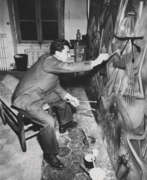

Roberto Sebastian Antonio Matta Echaurren was a Chilean artist, renowned for his significant contributions to the art world, particularly in painting and sculpture. As a figure deeply embedded in the realms of surrealism and abstract expressionism, Matta's works are celebrated for their complex, otherworldly landscapes and a profound exploration of the subconscious and architecture of the mind. His artistry is marked by fluid, organic forms and a masterful use of color, which set him apart as a visionary in the 20th century.
Matta's influence extended beyond the canvas, impacting the development of both European and American art scenes. His innovative techniques and philosophical inquiries into the nature of reality and human consciousness pushed the boundaries of traditional art forms, making him a pivotal figure among surrealists and later, abstract expressionists. Matta's work is characterized by its evocative, dream-like quality, and his ability to translate psychological concepts into visual spectacles has left a lasting legacy in the art world.
Among his renowned works, Matta's paintings are held in prestigious museums and galleries worldwide, including the Museum of Modern Art in New York and the Tate Modern in London. These institutions house pieces that showcase his unique blend of surrealism and abstract expressionism, offering art lovers and collectors a glimpse into his profound and imaginative universe. For those fascinated by the convergence of culture, art, and psychology, Matta's oeuvre presents an inexhaustible source of exploration and inspiration.
For collectors and experts in art and antiques, the legacy of Roberto Sebastian Antonio Matta Echaurren offers a rich field of discovery and appreciation. His contributions to the realms of painting and sculpture continue to resonate, providing deep insights into the capabilities of artistic expression. To stay informed about new product sales and auction events related to Matta's works, we invite you to sign up for updates. This subscription is your gateway to the latest in the world of this unparalleled artist, ensuring you never miss an opportunity to engage with the art and culture that Matta so vividly represented.
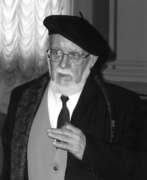

Andrei Andreevich Mylnikov (Russian: Андре́й Андре́евич Мы́льников) was a Russian painter and educator, celebrated for his contributions to Soviet and Russian art. Born in Pokrovsk in 1919, Mylnikov's artistic journey led him to study and later teach at the prestigious Ilya Repin Institute of Painting, Sculpture and Architecture, embodying the spirit of Soviet artistry through his work and mentorship.
Mylnikov's art spans a range of genres, from portraits and landscapes to monumental art. His portraits, such as those of his wife, resonate with harmony and lyricism, drawing comparisons to the Russian Impressionist tradition. Landscapes, like "Summer" (1969) and "Venice" (1964), showcase his ability to blend realism with the symbolic, marked by a fresh palette and pure color. Noteworthy among his creations is the "Farewell" (1975), a painting that captures the emotional gravity of the Soviet people's wartime experiences, and the "Spanish Triptych," which reflects on themes of life, death, and the human spirit, earning him the Lenin Prize.
Mylnikov's works are held in high esteem, finding places in Russia's most prestigious museums and galleries, as well as international collections. His influence extends beyond his canvases, through his significant role in educating future artists and shaping the course of Soviet and Russian art.
For collectors and art enthusiasts, Mylnikov's oeuvre offers a profound glimpse into the soul of Russian art, blending technical mastery with deep emotional and philosophical exploration. His legacy continues to inspire admiration and respect among art lovers around the world.
To stay informed on exhibitions and sales of Andrei Andreevich Mylnikov's works, signing up for updates is highly recommended. This will ensure you're alerted to new opportunities to appreciate or acquire pieces by this remarkable artist, directly related to the primary keyword of interest.
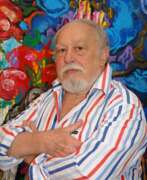

Togrul Farman oglu Narimanbekov (Russian: Тогрул Фарман оглы Нариманбеков) was a distinguished Azerbaijani painter and vocal artist, celebrated as a People's Artist of the USSR and Azerbaijan. Born in Baku in 1930, Narimanbekov's life was marked by the trials of his family during political repressions, which deeply influenced his artistic expressions. He studied monumental and decorative painting at the Lithuanian Institute of Fine Arts, launching a prolific career that spanned across various Soviet republics and European countries.
Narimanbekov's art is known for its vivid color palette and dynamic compositions, capturing the spirit and cultural essence of Azerbaijani life. His works are held in several prestigious collections globally, including the Museum of Modern Art in Germany and the Tretyakov Gallery in Russia. Notable pieces include "Caravanserail at Samarkand" and "Sunny Day," reflecting his mastery in portraying historical and everyday scenes with a lyrical quality.
For those interested in exploring the profound artistic contributions of Togrul Narimanbekov, and to stay updated on exhibitions and sales of his works, consider subscribing to updates on his legacy. This subscription will keep you informed about new discoveries, auction events, and available artworks related to Narimanbekov.
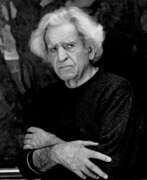

Nikolai Bagratovich Nikoghosyan (Russian: Николай Багратович Никогосян) was a Soviet Armenian sculptor and artist, celebrated for his mastery in creating expressive portraits and monumental sculptures that capture the essence and vitality of his subjects. Born in 1918, Nikoghosyan's art was significantly influenced by the Russian school of realistic sculpture and the national plastics of Armenia, reflecting a unique blend of cultural heritage and artistic innovation.
Throughout his remarkably long career, Nikoghosyan created a vast array of works, including over 200 busts in bronze, wood, and marble, 600 oil paintings, and 3,000 charcoal drawings. His artworks are appreciated worldwide, held in private collections across countries like France, Belgium, and Italy.
Nikoghosyan's significant contributions to art were recognized with numerous titles, including the People's Artist of the Armenian SSR, People's Artist of the USSR, and laureate of the USSR State Prize. His legacy is preserved and celebrated at the Nikoghosyan Cultural Foundation in Yerevan, Armenia, which showcases his sculptures, graphics, and paintings. The foundation not only serves as a tribute to Nikoghosyan's memory but also aims to inspire and support young Armenian artists.
For art enthusiasts and collectors, the work of Nikolai Bagratovich Nikoghosyan offers a fascinating glimpse into the blend of Armenian tradition and Soviet-era artistic expression, making his pieces highly sought after in the realms of both national and international art collections. To stay updated on exhibitions and auction events featuring Nikoghosyan's work, signing up for updates is highly recommended. This ensures you remain informed about opportunities to appreciate or acquire pieces by this master sculptor and artist.
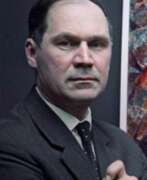

Evald Okas (Russian: Эвальд Карлович Окас) was an esteemed Estonian painter, celebrated for his profound contribution to art, particularly through his captivating portraits of nudes. Born in Tallinn in 1915, Okas embarked on his artistic journey at the State Art School, where the tumultuous era of World War II and the subsequent Soviet invasion of Estonia deeply influenced his path. These events led him to join the Soviet army and eventually become part of the artistic collectives organized in the Soviet rear in Yaroslavl, Russia, where he honed his skills under the mentorship of significant figures such as Aino Bach and Richard Sagrits.
Throughout his career, Okas displayed a remarkable versatility, dabbling in socialist realism during his early years, particularly noted in his work alongside Elmar Kits and Sagrits in painting the ceiling of the Estonian National Opera. However, by the late 1950s, he shifted towards working primarily in charcoals, creating ex libris and exploring freer artistic expressions. This period marked a significant evolution in his art, allowing him to exhibit across the Soviet Republics and internationally, showcasing his ability to capture the essence of his subjects with a profound depth and sensitivity.
Notably, Okas's work took a lyrical turn during his time on Kihnu Island, where he painted numerous portraits of fishermen and islanders, reflecting a more picturesque and liberated brushwork. These works are celebrated for their naturalistic portrayal of everyday life, imbued with a sense of warmth and intimacy that characterizes Okas's approach to his subjects.
Evald Okas's legacy extends beyond his own contributions to include the artistic endeavors of his son, Jüri Okas, an architect, installation artist, and printmaker, ensuring the continuation of the Okas family's impact on the art world. His works remain a significant part of Estonia's cultural heritage, offering insight into the country's historical and social narrative through the lens of one of its most talented artists.
For collectors and experts in art and antiques, the exploration of Evald Okas's oeuvre offers a unique window into the evolution of Estonian art through the 20th century. To stay updated on sales and auction events featuring Okas's work, signing up for updates is highly recommended. This subscription ensures access to the latest information on opportunities to acquire pieces by this remarkable artist, further enriching the appreciation of Estonia's rich artistic legacy.
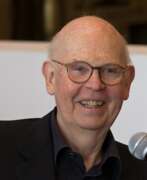

Claes Oldenburg was a Swedish-born American sculptor, celebrated for his groundbreaking contributions to the field of public art and sculpture. With a career spanning over several decades, Oldenburg redefined the boundaries between sculpture and everyday objects, bringing a whimsical yet profound commentary on consumer culture and the urban environment. His talent for transforming the mundane into the monumental made his work not only iconic but also a vital part of the conversation about the role of art in public spaces.
Oldenburg's sculptures are characterized by their colossal scale and imaginative designs, often inspired by everyday items. Perhaps his most famous works include "Clothespin" in Philadelphia and "Spoonbridge and Cherry" in Minneapolis. These pieces are emblematic of his unique approach to sculpture, where familiar objects are reimagined in unexpected contexts, challenging viewers to see the world around them in new ways. His ability to blur the lines between art and life, combined with his playful exploration of form and material, has left an indelible mark on the art world.
For collectors and experts in art and antiques, Oldenburg's works represent not just significant artistic achievements but also compelling investments. His sculptures and installations continue to be celebrated in museums and galleries worldwide, testament to his enduring influence and relevance in the contemporary art scene. For those interested in the intersection of culture, art, and urban life, Oldenburg's legacy offers rich insights and inspiration.
To stay informed about new product sales and auction events related to Claes Oldenburg, we invite you to sign up for updates. This subscription service is designed for collectors and art enthusiasts eager to keep abreast of the latest developments and opportunities in the world of art and antiques. Join us in exploring the remarkable contributions of Claes Oldenburg to the art world.
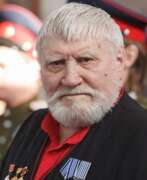

Pyotr Pavlovich Ossovsky (Russian: Пётр Павлович Оссовский) was a Russian artist, born in 1925, whose work deeply resonates with the spirit and challenges of his time. Known for his versatility, Ossovsky excelled in genre and portrait painting, as well as graphic arts, making significant contributions to the Soviet art scene from the 1960s onwards.
Ossovsky's artwork was steeped in the realities of Soviet life, often exploring themes of provincial Russia and the everyday lives of its people. His approach was not just observational but also deeply personal, reflecting his own experiences and the broader cultural environment. He was particularly noted for incorporating themes from various regions, including Cuba, Mexico, and Siberia, into his series of paintings which later culminated in exhibitions.
A significant part of Ossovsky’s legacy is his academic contributions; he was a member of the USSR Union of Artists and an academician of the Russian Academy of Arts from 2005. His works are held in high regard and continue to be exhibited posthumously, highlighting their lasting impact on Russian art.
For collectors and experts in Soviet art, understanding Ossovsky's work offers a window into a unique era of artistic expression. His pieces, such as "Morning in Havana" and "Portrait of a Father," are not just artistic expressions but historical documents that capture the essence of the time.
For those intrigued by Pyotr Pavlovich Ossovsky's artistic heritage and interested in exploring further opportunities related to his work, subscribing for updates is highly recommended. This subscription will keep you informed about upcoming sales, auction events, and exhibitions featuring Ossovsky's art, ensuring you never miss a chance to enrich your collection.
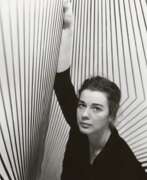

Bridget Louise Riley, an eminent English painter, has captivated the art world with her pioneering contributions to the Op Art movement. Born in London in 1931, Riley's early works were characterized by a figurative, semi-impressionist style. However, her artistic trajectory took a significant turn in the late 1950s and early 1960s when she began experimenting with optical illusions, leading to the development of her signature Op Art style. These works, utilizing geometric patterns in black and white, explored the dynamics of perception, creating disorienting effects and sensations of movement or color in the viewer.
Riley's exploration into color, which commenced in 1967, marked a new phase in her career. Her visit to Egypt in the early 1980s further enriched her palette, leading to the creation of works that reflected the vibrant hues of the Egyptian landscape. This period also saw the introduction of her 'Egyptian palette', which captured both the spirit of ancient and modern Egypt. Notable among her colorful works is "Cataract 3", where Riley utilized the contrast between warm and cold colors to produce a shifting, dynamic effect on the canvas, a testament to her continuous exploration of the interaction between form, color, and human perception.
Riley's work extends beyond canvas, with significant contributions to public art through murals. Her installations at prestigious institutions like the Tate, the Musée d'Art Moderne de la Ville de Paris, and the National Gallery, as well as a large-scale mural for the Chinati Foundation in Marfa, Texas, demonstrate her versatility and commitment to engaging with a broader public audience.
For collectors and experts in art and antiques, Riley's work represents a fascinating intersection of art, science, and perception, offering a unique visual experience that challenges and delights. Her dedication to expanding the boundaries of visual art ensures her place as a central figure in contemporary art discourse.
Sign up for updates related to Bridget Louise Riley to stay informed about new product sales and auction events showcasing her groundbreaking work. Join us in celebrating the legacy and ongoing journey of one of the foremost exponents of optical art.


Semion Aronovich Rotnitsky (Russian: Семён Аронович Ротницкий) was a Soviet Russian painter, celebrated for his significant contributions to the Leningrad school of painting. Born on December 28, 1915, in Minsk, Belarus, then part of the Russian Empire, Rotnitsky's artistic journey was marked by his deep engagement with portrait painting, an area where he gained considerable acclaim. His works are notable for their expressive power and intricacy, reflecting the socio-political milieu of his times.
Rotnitsky's education at the Repin Institute of Arts under Boris Ioganson and his subsequent role as a senior lecturer and director at the Kazan Art School from 1948 to 1960 underscored his commitment to art education and mentorship. He was a member of the Saint Petersburg Union of Artists and was honored as an Art worker of the Tatar Republic, highlighting his pivotal role in the artistic community of Leningrad, now Saint Petersburg.
For art collectors and enthusiasts, Rotnitsky's works represent a unique intersection of Soviet historical context and artistic innovation. His contributions have been recognized in various exhibitions and his legacy continues to be studied for its artistic and historical significance. To stay updated on exhibitions and sales featuring Semion Aronovich Rotnitsky's work, consider signing up for relevant updates. This subscription will keep you informed about new product sales and auction events specifically related to Rotnitsky's art.
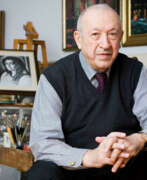

Tahir Salahov (Russian: Таир Теймурович Салахов) was an esteemed Soviet and Azerbaijani painter and draughtsman, celebrated for his pivotal role in the art world. Born in Baku, Azerbaijan, Salahov's journey into the arts commenced at the Azimzade Art College before advancing to the Surikov Moscow Art Institute. Early in his career, his work, particularly "The Shift is Over," garnered significant attention and acclaim, marking his prominence in the art scene.
Salahov's artistry is renowned for its embodiment of the "severe style," a movement within Soviet art in the 1960s that sought to provide a realistic, publicist view in contrast to the polished, idealized portrayal prevalent during the Stalin era. His masterpieces, notably portraits and scenes depicting the life of Baku oil workers, are lauded for their powerful expression and lack of idealization. Salahov's work underwent an evolution over the years, with his later pieces showcasing more peaceful, lyrical contemplations with evident Eastern influences, as seen in "Portrait of Grandson Dan." This transition is marked by smoother lines and a more sophisticated palette, highlighting his versatility and depth as an artist.
Salahov's contributions extended beyond his paintings; he was a key figure in several art academies and organizations worldwide, including the Artists' Union of the USSR and the Russian Academy of Arts. His achievements have been recognized with numerous awards, such as the People's Artist of the USSR and the Order "For Merit to the Fatherland." Salahov's legacy is cemented not only through his artworks but also through his significant impact on the cultural and artistic heritage of Azerbaijan and the broader Soviet and post-Soviet space.
For collectors and art enthusiasts, Salahov's work represents a crucial junction in the narrative of 20th-century art, bridging the gap between realism and the thematic, stylistic diversities of Soviet and Azerbaijani art. His paintings and drawings, many of which reside in prestigious museums, continue to inspire and captivate audiences worldwide.
If you're keen on exploring the life and works of Tahir Salahov further, consider signing up for updates. Subscribers will be alerted to new product sales and auction events related to Salahov's art, ensuring you stay informed about opportunities to engage with the legacy of this monumental artist.
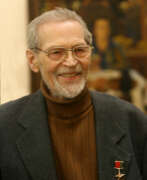

Mikhail Andreyevich Savitsky (Russian: Михаил Андреевич Савицкий) was a Belarusian painter, born on February 18, 1922. His experiences in World War II, where he fought and was imprisoned, deeply influenced his artistic work, leading him to focus on themes of war, struggle, and the human spirit. Savitsky's education in art began after his military service; he graduated from Minsk Art College in 1951 and the Moscow Art Institute of Surikov in 1957. He dedicated much of his life to his craft, becoming a significant figure in Belarusian and Soviet art.
Savitsky is renowned for his powerful depictions of war and its impact on Belarus and its people. His works such as “Partisan Madonna” (1967) and “Leaving in the Night” (1980) are celebrated for their emotional depth and artistic mastery. “Partisan Madonna,” for instance, is viewed as a symbol of Belarusian defense during World War II, portraying a peasant mother as a figure of resilience and protection. On the other hand, “Leaving in the Night” explores the themes of sacrifice and maternal strength during times of conflict, representing the broader struggles faced by Belarus during the war.
Throughout his career, Savitsky received numerous accolades, including the title of People's Artist of the USSR in 1978 and the Hero of Belarus award in 2006. His works are a testament to the resilience of the human spirit in the face of adversity and are housed in various museums and galleries, notably the Minsk State Art Museum and the Gallery of Savitsky in Minsk.
For collectors and experts in art and antiques, Savitsky's oeuvre offers a profound insight into the Soviet and Belarusian artistic narrative, underlined by historical events and personal resilience. His legacy continues to inspire and resonate, providing a window into the experiences that shaped a significant era in Belarusian history.
To stay updated on works and auction events related to Mikhail Andreyevich Savitsky, sign up for updates. This subscription will keep you informed about new product sales and auction events, ensuring you don't miss out on important opportunities related to Savitsky's profound and impactful art.
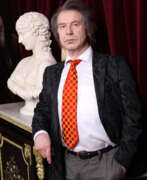

Alexander Maxovich Shilov (Russian: Александр Максович Шилов) is a distinguished Russian portrait painter whose influence spans both the Soviet and contemporary Russian art scenes. Born on October 6, 1943, in Moscow, Shilov's early life was marked by hardship, driving him to work as a loader at just fifteen to support his family. Despite these challenges, his passion for art led him to study at the Surikov Moscow Art Institute between 1968 and 1973, where he honed his skills and developed a distinctive style that would later define his career.
Shilov's artistry is deeply rooted in the tradition of realism, a commitment that he has steadfastly maintained throughout his career. This approach has enabled him to capture the essence of his subjects with remarkable sensitivity and depth. His works often reflect the people and events of his time, from portraits of Soviet cosmonauts and party leaders to tender depictions of ordinary citizens, front-line soldiers, and workers, embodying the spirit and challenges of the era. Notably, his portraits of Soviet leaders and his contributions to ceremonial portraiture have cemented his reputation, while his personal tragedies and responses to social events have added layers of depth to his work.
Shilov's contributions to Russian art have not gone unrecognized. His dedication was honored when an asteroid was named after him in 1992, and in 1996, he generously donated 365 of his portraits to the Russian government. Moreover, his achievements were further acknowledged with the establishment of the Moscow State Art Gallery of People's Artist of the USSR Alexander Shilov in 1997, dedicated solely to exhibiting his works. This gallery, located steps away from the Moscow Kremlin, offers a comprehensive overview of his artistic journey, from early works to those from his mature period.
For art collectors and enthusiasts interested in the rich tapestry of Russian portrait painting, Alexander Shilov's work represents a profound legacy of realism and emotional depth. His paintings not only capture the likeness of his subjects but also the spirit of an era, making them invaluable pieces of cultural and historical significance.
To stay updated on new additions to Shilov's collection and upcoming auction events featuring his work, signing up for updates is highly recommended. This subscription ensures you're informed about the sales and exhibitions of one of Russia's most celebrated portrait painters, Alexander Maxovich Shilov.
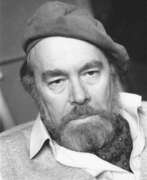

Evgeny Nikolaevich Shirokov (Russian: Евгений Николаевич Широков), born on March 28, 1931, in Kasli, USSR, and passing on December 31, 2017, in Perm, Russia, was a pivotal figure in Soviet and Russian art. Renowned as a portrait painter, he was celebrated for his contributions to Russian realist art during the latter half of the 20th century. Shirokov's dedication to art education, serving as a professor in the painting department at the Perm State Institute of Arts and Culture, underscores his impact beyond his own creative works.
His work, deeply rooted in the "severe style" of Soviet painting, is characterized by its expressive portrayals of cultural figures and workers. This style was integral to the aesthetic and ideological shift during the Khrushchev Thaw, moving away from the officious art of earlier periods towards a focus on the individual and the quotidian. Shirokov's monumentalized portraits stand as testaments to the era's aspirations and its people, earning him a revered place among artists who sought to capture the essence of Soviet life.
One of Shirokov's most famous works, "Friends," portrays the touching bond between a boy and his dog, exemplifying his ability to capture deep emotional states and the nuances of human (and animal) relationships. This painting, which initially remained in his family's collection before being donated to the Perm Art Gallery, showcases Shirokov's skill in drawing attention to the subjects' interconnectedness and shared vulnerability. The work is celebrated not only for its artistic merit but also for its exploration of friendship's universal and enduring qualities.
Shirokov's art resides in over fifteen museums across Russia, including the prestigious State Tretyakov Gallery, and is held in high esteem in private collections worldwide. His legacy, marked by numerous awards such as the People's Artist of the RSFSR and the USSR, reflects the broad acknowledgment of his significant contribution to the art world. For art collectors and experts, Shirokov's oeuvre presents a rich tapestry of Soviet and Russian life, rendered with a realism that speaks to the human experience across boundaries.
To stay informed about upcoming sales and auction events featuring Evgeny Nikolaevich Shirokov's works, sign up for updates. This subscription is an essential resource for collectors eager to enhance their collections with pieces by this master of Russian realist art.


Georgy Georgievich Shishkin (Russian: Георгий Георгиевич Шишкин), born on January 25, 1948, is a Russian painter renowned for his unique artistic style that blends traditional Russian themes with modern aesthetics. His work often reflects the subtle inner lives of his subjects, employing a distinctive glazing technique in his pastel works, particularly evident in his depictions of ballet, which beautifully capture the emotional nature of this art form.
Educated at the Ural State Academy of Architecture and Arts in Yekaterinburg, Shishkin has had a prolific career with exhibitions across Russia and Europe. He is perhaps best known for his "Russian Dreams" series, initiated in 1992, which explores the spiritual essence of Russian identity through a fusion of the abstract and the real. Shishkin's accolades include winning the Taylor Foundation Prize in 1999, affirming his significant impact on contemporary art.
Shishkin has also contributed to the design of postage stamps for Monaco, including the effigy of H.S.H. Prince Albert II, further demonstrating his versatility and the international recognition of his artistry. His works have been displayed in prestigious venues such as the State Russian Museum and have garnered international attention, with pieces sold at major auction houses like Christie's.
If you're fascinated by the artistic journey of Georgy Shishkin and wish to stay updated on his latest exhibitions, works, and auction events, consider signing up for our exclusive updates. This subscription is your gateway to the vibrant world of Shishkin's art, ensuring you never miss a chance to view or acquire his compelling creations. Sign up here for timely updates directly related to Georgy Shishkin's art sales and exhibitions.
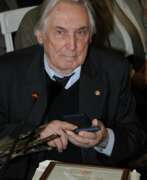

Valentin Mikhailovich Sidorov (Russian: Валентин Михайлович Сидоров) was a distinguished Russian painter, teacher, and a significant figure in the art world, celebrated for his profound contributions to Russian landscape painting and his role in art education. Born in 1928 in Sorokopenie, Tver Gubernia, Sidorov's early education in art took place at notable institutions such as the Moscow Palace of Pioneers, the Moscow Secondary School of Art, the Ilya Repin Institute of Painting, Sculpture and Architecture, and finally, the Vasily Surikov Institute of Art in Moscow. His transition to the Surikov Institute marked a pivotal point in his career, allowing him to develop a unique approach to landscape painting.
Sidorov's career was defined by his dedication to capturing the essence of the Russian landscape, often veering away from the ideological demands of the times to paint what resonated with his soul. His early works from the "Korovino" series, including "Stormy Day. Korovino" and "Morning in the Hut," are celebrated for their delicate execution and ability to evoke the artist's emotional experiences through common scenes of nature and village life. His contributions to the genre were further solidified during his time at the "Academic Dacha," where his engagement with plein-air painting deepened his exploration of pictorial form and composition.
Throughout his illustrious career, Sidorov received numerous accolades, including the title of People’s Artist of the USSR, the Ilya Repin State Prize, and the State Prize of Russia. His works have been included in the collections of prestigious institutions such as the Russian Museum, where pieces like "Bell. Silence" and "In the Beginning of May" are held. Sidorov's paintings are admired for their lyrical quality, depth, and the masterful way they communicate the beauty of the Russian landscape.
For collectors and experts in art and antiques, Valentin Mikhailovich Sidorov's works represent a unique blend of Russian heritage, emotional depth, and artistic mastery. His legacy continues to inspire and influence the world of Russian art.
If you're passionate about exploring the works of Valentin Mikhailovich Sidorov or wish to stay updated on upcoming sales and auction events featuring his art, consider signing up for updates. This subscription will ensure you're always in the know about new opportunities to appreciate or acquire pieces by this remarkable artist.
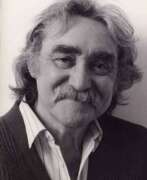

Jesús Rafael García Soto was a Venezuelan artist, renowned for his pioneering work in kinetic and op art, which sought to create an immersive experience that blurred the lines between the artwork and the viewer. Born in 1923, Soto embarked on a journey that would see him at the forefront of a movement that emphasized the visual dynamics of art, integrating sculpture, painting, and viewer participation in novel ways. His exploration of geometric abstraction and optical effects led to the development of his distinctive style, characterized by the use of materials such as plexiglass to create engaging optical illusions and vibrant, moving sculptures.
Soto's journey into the realms of kinetic art was marked by significant milestones, including his participation in the groundbreaking 1955 exhibition, Le Mouvement, at the Denise René gallery in Paris. This event was instrumental in defining the kinetic art movement, with Soto alongside artists like Yaacov Agam, Marcel Duchamp, and Victor Vasarely, presenting works that invited viewers to experience art in a dynamic, interactive manner. His quest for a new visual language led him to experiment with the dematerialization of form, creating artworks that seemed to dissolve into their surroundings, thereby challenging the viewer's perceptions of space and form.
Throughout his career, Soto remained dedicated to exploring the intrinsic relationships between space, movement, and viewer perception. His creations, ranging from the "Penetrables" series—immersive environments made of hanging strands that visitors could walk through—to large-scale murals and public sculptures, have been celebrated worldwide. His works are part of major collections and have been exhibited extensively, including at institutions such as the Museum of Modern Art in New York and the Tate Gallery in London, demonstrating his lasting influence on contemporary art.
For art collectors and enthusiasts intrigued by the fusion of art and motion, Jesús Rafael García Soto's work offers a profound exploration of the kinetic art movement's possibilities. His contributions to art are not just visual spectacles but invitations to engage directly with the kinetic energy and vibrancy of the world.
To stay updated on exhibitions and sales featuring Jesús Rafael García Soto's work, sign up for updates. This subscription ensures you're informed about new product sales and auction events related to this visionary artist, offering unique opportunities to experience the dynamism of kinetic art firsthand.
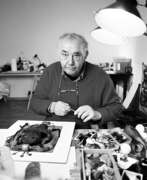

Daniel Spoerri was a Swiss artist of Romanian-Jewish descent, renowned for his contributions to the art world as a key figure in the Nouveau Réalisme (New Realism) movement. Born in Romania in 1930, Spoerri made significant strides in visual art, particularly in his development of "snare-pictures," a method where he captured a group of objects, such as table settings and the remnants of meals, in a state of apparent disorder yet meticulously fixed to the tabletop.
His works are celebrated for turning ordinary moments into a tableau of frozen time, capturing life's ephemeral qualities through the permanence of art. Notably, his piece "Tableau piège" involves the fixation of objects to a board or table, which is then displayed vertically, challenging traditional art display norms and viewer perceptions. This innovative approach allowed him to explore themes of consumption, waste, and the mundane, making the everyday profound.
Daniel Spoerri's art is housed in many esteemed institutions, including the Museum of Modern Art in New York and the Centre Georges Pompidou in Paris. His work continues to influence contemporary art, offering a unique perspective on the art of assemblage and the beauty in the banal.
For those interested in exploring more about Daniel Spoerri's life and works, or in keeping updated with sales and auction events related to his art, signing up for our updates is highly recommended. This subscription ensures you stay informed about the latest offerings and exhibitions featuring Spoerri's intriguing creations.
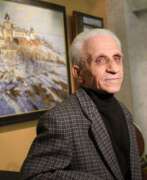

Aleksey Petrovich Tkachyov (Russian: Алексей Петрович Ткачёв), born on September 11, 1925, in Bryansk, USSR, was a Soviet and Russian artist and educator renowned for his contributions to graphic art and painting. His artistic journey, marked by collaboration with his older brother Sergei Tkachyov, led to the creation of a distinctive tandem known as the Tkachev Brothers. Their collective works, encompassing genre paintings, portraits, landscapes, and still lifes, are celebrated for embodying the essence of contemporary Russian art and socialist realism. This unique partnership yielded a multitude of canvases that have been integrated into the "golden" fund of Russian painting, with themes ranging from historical events to everyday life, reflecting the brothers' profound connection to their cultural heritage.
The Tkachev Brothers' oeuvre, notable for its rare focus on genre art within the context of modern Russian art, has achieved significant acclaim and demand. Their paintings are featured in leading Russian museums and have found places in private collections across the globe, including in Belgium, Britain, Germany, Italy, Canada, China, the Netherlands, USA, Taiwan, France, South Korea, and Japan. This widespread recognition underscores the universal appeal and historical significance of their work, bridging cultural and geographical divides through the universal language of art.
For collectors and experts in art and antiques interested in the legacy of Aleksey Petrovich Tkachyov and the Tkachev Brothers, their work represents not only an investment in fine art but also a connection to the rich tapestry of 20th-century Russian culture and history. To stay updated on new product sales and auction events related to Aleksey Petrovich Tkachyov, signing up for updates is highly recommended. This ensures access to exclusive information on available works and upcoming collections, allowing enthusiasts to further explore and appreciate the profound impact of the Tkachev Brothers on contemporary art and society.
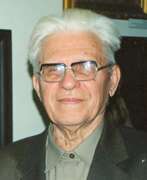

Sergey Petrovich Tkachyov (Russian: Сергей Петрович Ткачёв), born in 1922 in the Chugunovka, Bryansk region of Russia, is a prominent figure in the Russian art scene, celebrated for his evocative village figure and genre paintings. Educated at the Surikov Institute in Moscow, Tkachyov graduated in 1952 and, alongside his brother Aleksei, has captured the essence of rural life in Russia through their art for over six decades. The brothers, sharing studios in both Moscow and the countryside, have collaboratively worked on many pieces, often on the same canvas, which has led them to be awarded prestigious titles such as "People's Artist of the USSR" and receiving accolades like the USSR State Prize and the Repin Prize of the Russian Federation .
Tkachyov’s works are notable for their deep narrative quality and emotional depth, focusing on genre and characterization. His early sketches, such as “A Lonely Fisherman” from 1948, evolved into more complex compositions like “Kids” created between 1958 and 1960, showcasing his ability to weave stories through his art. His and his brother's early works, influenced by the likes of Valentin Serov and Konstantin Korovin, laid a foundation for their unique artistic language that emerged in the late 1950s. This period marked the creation of significant works, differing in style but united in their rich narrative and visual texture.
Among the celebrated works of Tkachyov is “On the High Point,” which pays homage to the valor of soldiers during World War II, encapsulating the tension and heroism of a nocturnal assault on an enemy position. Another notable piece, “Portrait of Atamanov,” completed in 1995, delves into the personal, portraying a war veteran in a ceremonial style that meticulously captures the details of military honors, reflecting Tkachyov's own experiences and connections forged during the war. Additionally, “The School in Ovstug,” painted in 1984, is a historical piece reflecting on the educational legacy in a village, symbolizing the broader cultural and social narratives that Tkachyov seeks to preserve through his art.
Sergey Tkachyov’s body of work stands as a profound chronicle of Russian rural life and its people, marked by a dedication to realism, emotive storytelling, and a deep connection to the country’s history and culture. His paintings not only celebrate the beauty and hardship of rural Russia but also serve as a reminder of the nation's complex historical tapestry, making them invaluable to collectors and experts in art and antiques.
To stay updated on exhibitions and sales featuring the captivating works of Sergey Petrovich Tkachyov, sign up for our newsletter. This subscription will ensure you are the first to know about new product sales and auction events related to this esteemed artist.
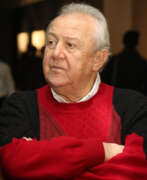

Zurab Konstantinovich Tsereteli (Russian: Зураб Константинович Церетели), a Georgian-Russian artist renowned for his monumental sculptures, has left an indelible mark on the landscape of modern art. Born in Tbilisi in 1934, Tsereteli expanded his artistic vision beyond painting after moving to Paris in the 1960s, where he was influenced by luminaries such as Picasso and Chagall. His work is characterized by a blend of dramatic, unconventional styles that have spurred debate but undeniably contributed to the cultural fabric of cities around the world.
Tsereteli's artworks, ranging from sculptures to paintings, are displayed globally, embodying his ethos that "art unites people." Noteworthy projects include the Peter the Great statue in Moscow, the Birth of the New Man in Seville, Spain, and the Tear of Grief in Bayonne, New Jersey, a poignant memorial to the victims of the 9/11 attacks. His commitment to fostering international cultural exchanges is evident in his role as the President of the Russian Academy of Arts and a UNESCO Goodwill Ambassador.
Beyond his public commissions, Tsereteli's contributions to education and the arts are profound. He founded the Moscow Museum of Modern Art and the Museum of Modern Art in Tbilisi, promoting modern and contemporary art in Russia and Georgia. His dedication to the Russian Academy of Arts underscores his belief in the importance of nurturing artistic talent and preserving the heritage of the academic school of fine arts.
For collectors and experts in art and antiques, Tsereteli's oeuvre offers a unique investment in pieces that are not only visually striking but also rich with cultural significance. His work encapsulates the dynamic interplay between traditional and contemporary art forms, making each piece a testament to his lifelong dedication to artistic innovation and cross-cultural dialogue.
To stay updated on new exhibitions, sales, and auction events related to Zurab Konstantinovich Tsereteli, sign up for updates. This subscription is a gateway to the latest developments in the world of a towering figure in art, offering exclusive insights into his ongoing contributions to the global art scene.
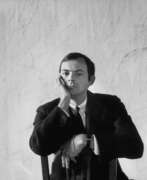

Cy Twombly, birth name Edwin Parker Twombly, was an American artist renowned for his contributions to painting, sculpture, and photography. Embracing a unique blend of classical references and graffiti-like elements, Twombly's work stands out in the art world for its distinctive, emotive scribbles and use of historical and literary themes. His art, often categorized within the realms of Abstract Expressionism and minimalism, diverges significantly in its lyrical sensitivity and intellectual depth, making it a subject of fascination and study among art collectors and experts.
Twombly's career, which spanned over six decades, was marked by a relentless pursuit of innovation and an intimate engagement with the materials of his art. His paintings, characterized by their gestural brushstrokes and cryptic symbols, evoke a range of emotions and ideas, bridging the gap between the personal and the universal. Notable works such as "Fifty Days at Iliam" displayed at the Philadelphia Museum of Art, and his series inspired by the seasons, showcase his ability to transform classical narratives into contemporary masterpieces. These pieces not only reflect Twombly's profound understanding of history and literature but also his capacity to reinterpret them within a modern context.
Furthermore, Twombly's sculptures, often overlooked next to his paintings, provide a tangible connection to the ancient world through their use of classical forms and unconventional materials. His work in this medium further emphasizes his fascination with the past, while simultaneously asserting the relevance of historical themes in contemporary art.
For collectors and experts in art and antiques, Cy Twombly's oeuvre represents an intriguing blend of poetic grace and intellectual rigor. His works, found in major museums and galleries worldwide, continue to inspire and challenge audiences with their enigmatic beauty and depth.
To stay informed about new product sales and auction events related to Cy Twombly's work, we invite you to sign up for updates. This subscription is an excellent opportunity for enthusiasts and collectors to remain connected to the evolving market of Twombly's art.
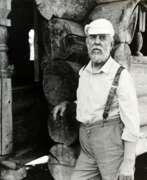

Andrei Vladimirovich Vasnetsov (Russian: Андре́й Влади́мирович Васнецов) was a prominent Russian painter, muralist, and a veteran of World War II. He was a key figure in the development of the "Severe Style" in Soviet art, which emerged as a significant movement during the mid-20th century. Vasnetsov's artistic heritage includes a diverse range of works including portraits, landscapes, still lifes, and monumental art such as frescoes and mosaics for public buildings across the USSR.
Born into a family of artists, Andrei was deeply influenced by his grandfather, Victor Vasnetsov, a celebrated master of historical painting. This familial legacy enriched his approach to art, combining traditional themes with a modernist vigor that defined his contributions to Russian art. Vasnetsov's education at the Moscow Institute of Applied Art and the Leningrad Higher School of Art and Industry further honed his skills, particularly in monumental painting.
His works are part of several prestigious collections, including the State Tretyakov Gallery and the Russian Museum, underscoring his significance in the Russian art scene. His commitment to art extended beyond creation; he was an influential mentor and educator, inspiring future generations of artists.
For art collectors and enthusiasts wishing to explore or acquire works by Andrei Vasnetsov, staying informed about upcoming auctions and private sales can be essential. Sign up to receive updates on new artwork sales and auction events featuring Vasnetsov's works, ensuring you never miss an opportunity to own a piece of this influential artist's legacy.
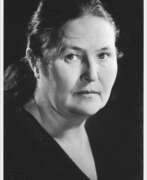

Tatyana Nylvna Yablonskaya (Russian: Татьяна Ниловна Яблонская) was a distinguished Ukrainian painter born on February 24, 1917, in Smolensk, Russian Empire, and passed away on June 17, 2005, in Kyiv, Ukraine. Her artistic journey began under the mentorship of Fedir Krychevsky at the Kyiv State Institute of Art, where she also served as a faculty member. Yablonskaya's paintings are renowned for their vibrant depiction of Ukrainian life, nature, and the spirit of its people, exemplified in works like "Bread" (1949) and "Morning" (1954).
Her commitment to art extended beyond the canvas, as Yablonskaya was a key figure in Ukraine's cultural landscape, serving as a Member of Parliament and holding significant positions within the Ukrainian and USSR Artists' Unions. Her contributions to art were recognized with numerous awards, including the prestigious title of People's Artist of the USSR, the Stalin Prize, and the Hero of Ukraine honor. Yablonskaya's legacy is preserved through her students, like Mikhail Turovsky, and her works that continue to inspire at exhibitions and in collections worldwide.
For collectors and enthusiasts of art and antiques, Yablonskaya's work offers a unique glimpse into the soul of Ukrainian culture and the resilience of its people through history. Her ability to blend traditional and modern techniques made her an influential figure in the art world.
Stay updated on Yablonskaya's work and related auction events by signing up for our newsletter. This subscription ensures you're informed about the latest sales and exhibitions featuring Yablonskaya's art, helping you stay ahead in the collectibles market.
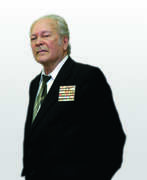

Haris Abdrakhmanovich Yakupov (Russian: Харис Абдрахманович Якупов) was a Soviet, Tatar, and Russian painter and teacher, celebrated for his contributions to art and his representation of the Soviet people's history and the national character of the Tatar village. Born on December 23, 1919, in Kazan, Yakupov graduated from the Kazan Art College in 1940 and later honed his skills at the Moscow Central Studio "The Artist" under B.V. Johanson in 1946. His experience as a World War II participant, traversing battlefields from Stalingrad to Czechoslovakia, deeply influenced his art, imbuing it with themes of heroism, spirit, and the moral essence of individuals facing trials.
Yakupov's artistry is recognized for capturing the essence of his subjects, often focusing on the moral and spiritual beauty of individuals and their harmonious or conflicting interactions with the world. His work includes a variety of themes, from civilian life and war heroes to the vibrant life in Tatar villages, showcasing a unique blend of color and decoration. Throughout his career, Yakupov created over 300 works, including 20 large canvases and more than 200 sketches, and his contributions have been honored with exhibitions dedicated to his legacy, such as those at the National Art Gallery of the State Museum of Fine Arts of the Republic of Tatarstan.
For collectors and art experts, Yakupov's work offers a profound glimpse into the Soviet era's artistic narratives and the rich cultural tapestry of the Tatar people. His paintings are not only visually striking but are also imbued with deep cultural and historical significance, making them invaluable additions to any collection.
To stay updated on new discoveries, sales, and auction events related to Haris Abdrakhmanovich Yakupov, sign up for our updates. This subscription is your gateway to the world of art sales and auctions, exclusively focusing on the legacy and works of Haris Abdrakhmanovich Yakupov.
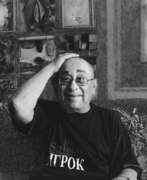

Boris Iosifovich Zhutovsky (Russian: Борис Иосифович Жутовский) was a Russian artist and illustrator, celebrated for his unique contributions to book art and graphic design. Born on December 14, 1932, Zhutovsky's career began to flourish after he graduated from the Moscow Polygraphic Institute in 1956. He worked in various Moscow publishing houses, where he left a significant mark with his expressive and sometimes grotesque graphic portraits and abstract painterly compositions.
Zhutovsky's artistic journey was notably marked by his involvement in the "unofficial art" movement within the Soviet Union. His works gained international exposure as they were exhibited in countries like Finland, Italy, Canada, and the United States, among others. This wide exposure came especially after he faced restrictions on exhibiting his work in the USSR following a scandal at a 1962 exhibition criticized by Nikita Khrushchev.
Zhutovsky's artworks are held in high regard and are part of many prestigious museum and private collections globally. His contributions to art were recognized with several awards, including medals at the Zlata Grona festival and the exhibition Alternative Attuale 2 in L'Aquila, Italy.
For art collectors and enthusiasts interested in modern Russian art, staying updated on Boris Iosifovich Zhutovsky's works can be deeply rewarding. To keep abreast of new sales and auction events featuring his art, consider subscribing to updates specifically tailored to Zhutovsky's works. This subscription will ensure you are informed of the latest opportunities to appreciate or acquire pieces by this distinguished artist.


Efrem Ivanovich Zverkov (Russian: Ефрем Иванович Зверьков) was a renowned Russian artist born in 1921, celebrated for his unique contributions to landscape painting. His artistry is noted for its poetic expressiveness, capturing the beauty and poetry of the Russian landscapes across all four seasons without a hint of triteness. Zverkov's innovative approach was particularly evident in his depiction of the northern landscapes, where he combined a romantic worldview with the vastness of nature, creating "pure" landscapes that conveyed a sense of veneration and wonder.
Throughout his career, Zverkov earned several accolades, including the prestigious titles of People's Artist of the USSR and Academician of the Russian Academy of Arts, reflecting his significant contributions to the art world. His work not only found a place in the hearts of art lovers but also in esteemed collections, such as the Tretyakov Gallery, which houses some of his most famous landscapes like “Flood on the Vashka” and “Northern Spring”.
Zverkov's legacy extends beyond his individual achievements to influence the broader scope of Russian Impressionism and the artistic exploration of societal values through landscape painting. His approach to plein air painting, working directly from nature in all seasons, allowed him to deeply understand and convey the essence of the Russian countryside, making his work a pivotal part of Russian fine art history .
For collectors and experts in art and antiques, Zverkov's work represents a key chapter in the evolution of landscape painting, blending technical mastery with a deeply personal and poetic vision of nature. To stay updated on new product sales and auction events related to Efrem Ivanovich Zverkov, sign up for updates. This subscription ensures you won't miss out on the opportunity to own a piece of this master's legacy.


